
Original Link: https://www.anandtech.com/show/2356
AMD's DTX Form Factor: Smaller PCs for Everyone?
by Anand Lal Shimpi on October 22, 2007 1:00 AM EST- Posted in
- Cases/Cooling/PSUs
At the beginning of 2007 AMD unexpectedly announced the intention to develop a new, open motherboard and chassis form factor, entitled DTX (because CTX was a monitor company?).
The idea behind DTX was to finally standardize small form factors for use by white box PC builders and the enthusiast community, both areas where BTX has not been able to really penetrate.
While Intel's BTX spec has been well implemented by the major OEMs, a quick search on Newegg reveals ATX/BTX compliant towers and two motherboards, both from Intel. We simply don't build BTX systems, which is unfortunate because it means that there's no real standardization in use for small form factor PCs by enthusiasts.
AMD also views BTX as too large of a departure from ATX for motherboard and chassis makers to justify bringing BTX boards to the enthusiast community. In AMD's eyes, BTX was a solution for a problem that no longer exists: the power-hungry Pentium 4. Thus DTX was designed as an auxiliary form factor standard, fulfilling the need for a small form factor standard that'll actually be used by more than OEMs.
What is DTX?
In February 2007 AMD published the DTX spec, the 10 page mechanical interface specification is unusually small for a brand new form factor, but it quickly makes sense when you realize that much of DTX is built off of ATX.
The DTX spec has four major requirements:
1) Motherboard size
2) Mounting hole locations
3) Rear I/O dimensions/locations
4) Expansion slot connector locations
There are two DTX form factors outlined in the spec: DTX and mini-DTX, both designed to augment, not replace, ATX.
DTX motherboards will measure 9.60" x 8.00" (243.84 mm x 203.20 mm), while mini-DTX boards measure 6.70" x 8.00" (170.18 mm x 203.20 mm). Mini-ITX motherboards can also be used in DTX compliant cases.
The big selling point for DTX is that it uses ATX mounting hole locations, so DTX motherboards can be used in current ATX cases.
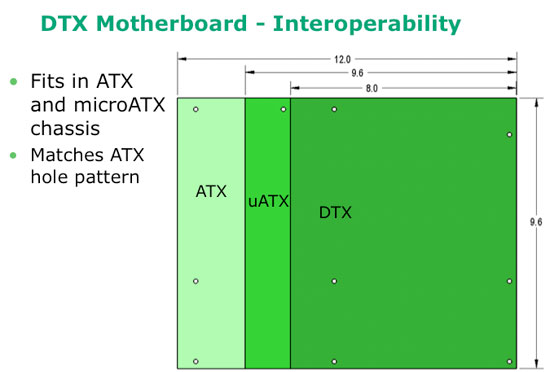
DTX motherboards can have a maximum of two slots, either PCI Express or regular PCI can be used. The I/O connector plane is identical to what's used in current ATX motherboards, although the layout can obviously differ from board to board. The DTX spec doesn't govern what type of ports must be used, leaving it up to the motherboard makers' discretion.
There are no new power supply requirements for DTX, it simply requires the same 24-pin power connector and 2x2 +12V connectors supported by the current ATX specification. Cooling requirements remain unchanged as well, DTX systems can use standard heatsink/fan units.
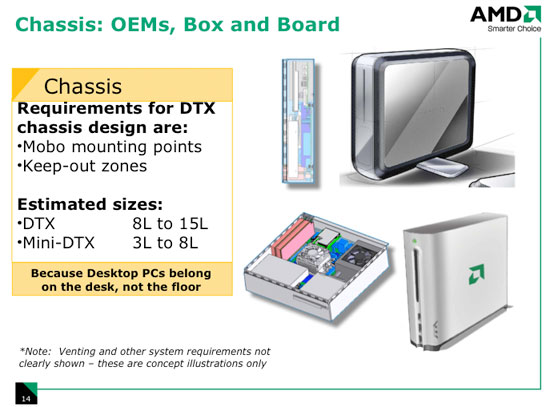
All in all, the DTX spec is really about motherboard size, thus we've got a very simple spec to deal with. It truly is an augmentation to ATX rather than a replacement.
Differences between BTX and DTX
The BTX specification document is a hefty 32 pages compared to DTX's 10, mainly because the form factor is a more dramatic departure from ATX.
While DTX motherboards fundamentally follow a similar board layout to ATX boards, BTX does some re-arranging of sockets and connectors. The CPU is moved to the front of the chassis, the memory to the left of the chassis and the expansion slots to the right.
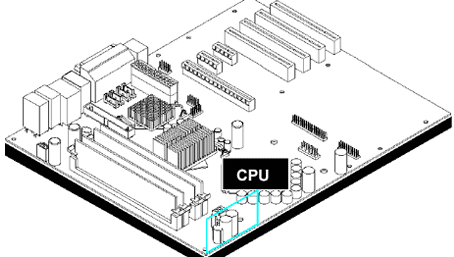
There are four BTX motherboard sizes supported: picoBTX, nanoBTX, microBTX and regular BTX. All BTX motherboards are 10.5" (266.70 mm) deep but vary in width.
| Form Factor | Maximum Board Depth | Maximum Board Width |
| picoBTX | 266.70 mm | 203.20 mm |
| nanoBTX | 266.70 mm | 223.52 mm |
| microBTX | 266.70 mm | 264.16 mm |
| BTX | 266.70 mm | 325.12 mm |
| mini DTX | 170.18 mm | 203.20 mm |
| DTX | 243.84 mm | 203.20 mm |
You can see from the chart above that picoBTX is closest in size to DTX, and there's nothing in the BTX spec that's quite as small as mini-DTX.
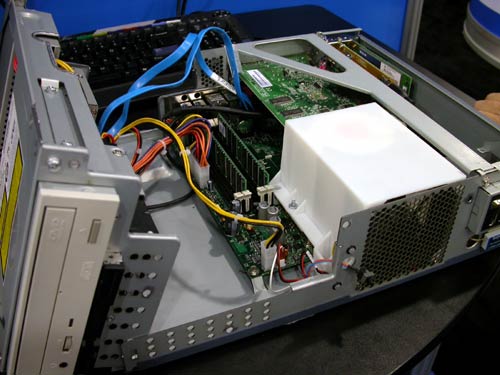
The other major difference between BTX and DTX is the thermal module requirements of BTX. While DTX uses standard heatsink/fan units, BTX calls for an enclosed thermal module to be used at the front of the chassis for cooling the CPU first and then all of the components behind it next.
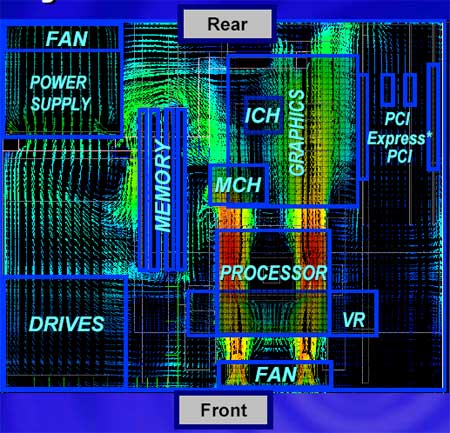
As DTX is an extension of ATX, it only tackles the low power PC markets, leaving the rest to ATX. DTX is designed for 45W or 65W CPUs (coincidentally, the two TDPs that AMD primarily offers), while the larger BTX variants can be used with more power hungry CPUs (and GPUs).
The Reference Platform
Why are we even talking about DTX today? AMD sent us its first DTX reference platform, showing us that actual progress had been made on the standard since its announcement at CES in 2007.
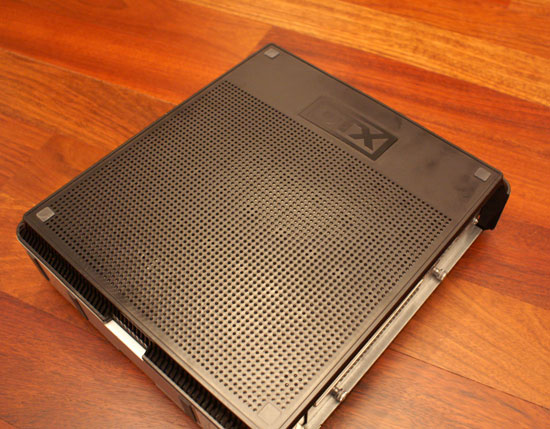
The system uses a reference AMD 690G DTX motherboard, AMD Athlon X2 BE-2350 (45W Athlon 64 X2 running at 2.1GHz), 1GB of DDR2 memory, with a standard 3.5" hard drive, slim form factor DVD drive and a 250W power supply.
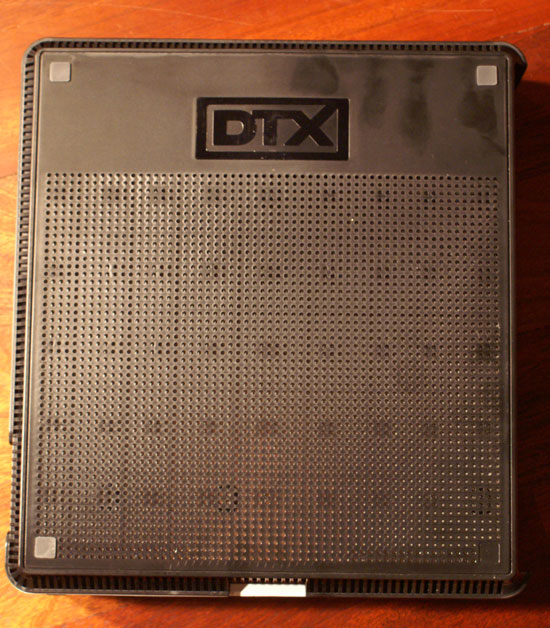
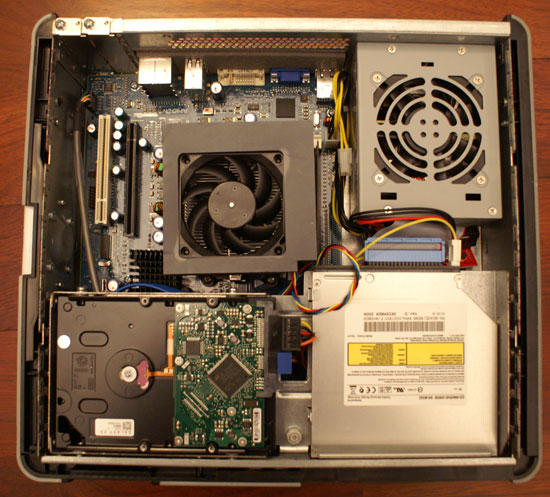
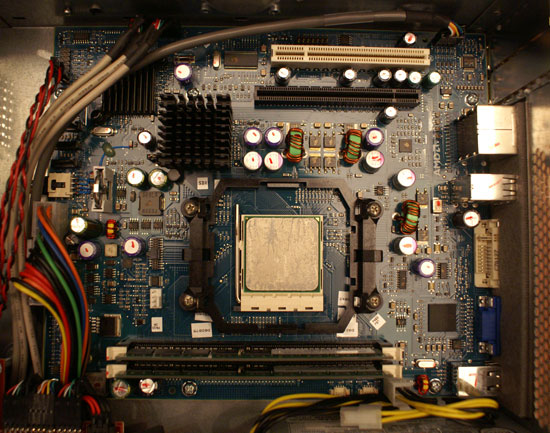
The system itself is quite compact, albeit not particularly stylish. It works and we already know how the Athlon X2 BE-2350 performs so there are no complaints there.
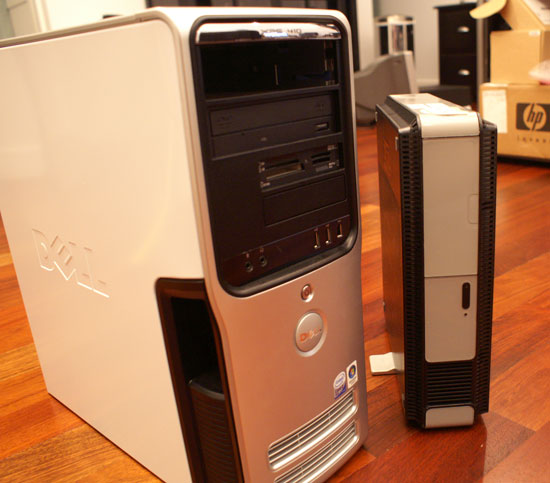
With a power supply fan and CPU fan running, it's reasonably quiet but obviously not silent. AMD mentioned that the prototype chassis we received was missing a vent over the power supply and thus would be louder than normal. We noticed that during usage the fans spun up to a level too high for use in a quiet HTPC environment. AMD cautioned us against drawing any conclusions based on this prototype's performance, and we tend to agree (although that does mean that the reference design is good for little more than some nice pictures).
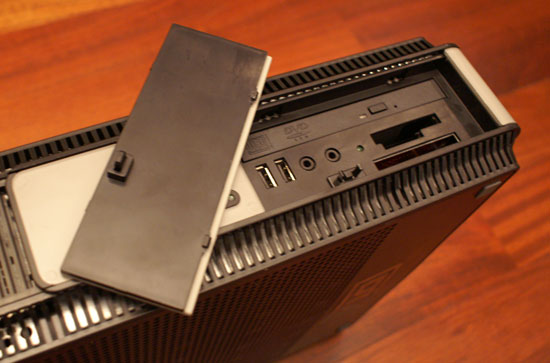
The removable flap covers the DVD drive, but isn't hinged, it just comes off...thankfully this is a prototype
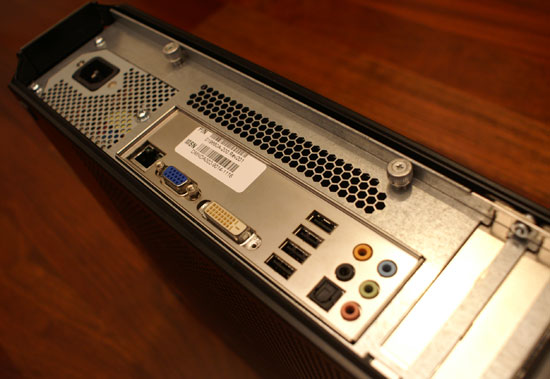
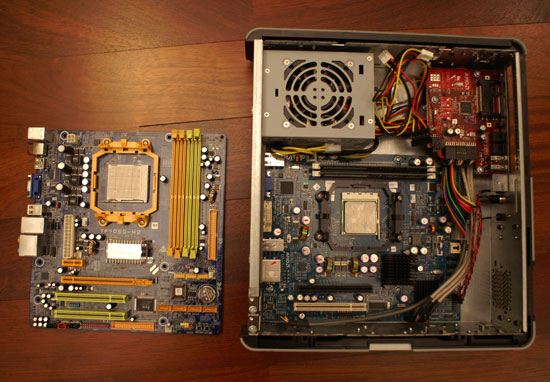
A micro ATX motherboard (left) vs. DTX platform (right)
Obviously the performance of the reference design doesn't really matter in the grand scheme of things, it's really a question of how well the designs that hit the market in the future fare.
Industry Support for DTX?
AMD sent us this slide showing the manufacturer support for DTX:
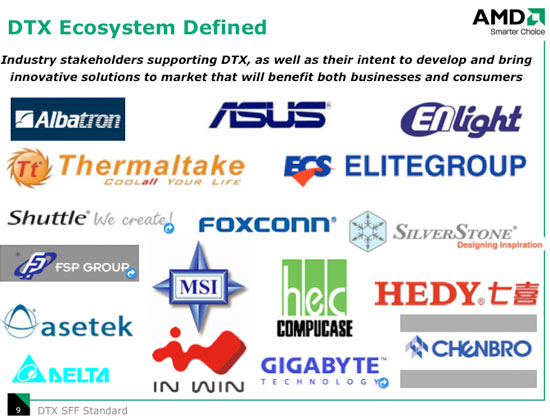
There are obviously some big names on that list, but what about actual products?
It looks like AMD's partners have five DTX chassis in development and another five mini-DTX:
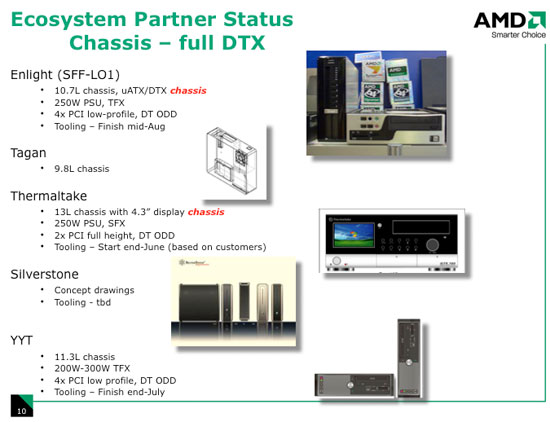
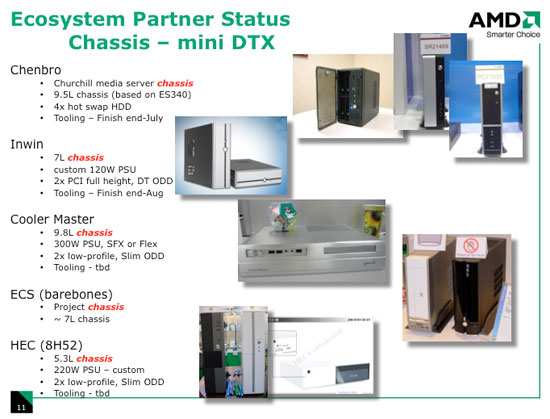
Motherboard support is also there, but we haven't seen anything publicly available yet despite a number of designs being complete as of publication.
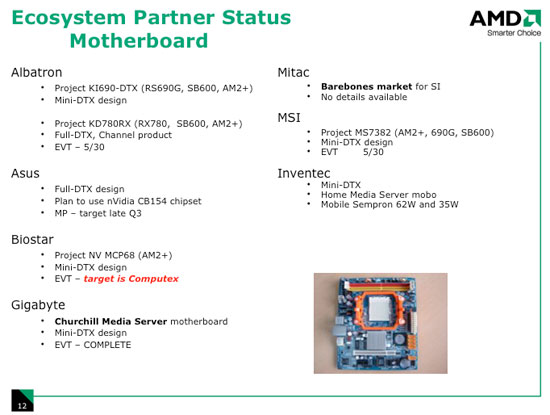
Final Words
AMD's goal is to bring small form factor standardization to the channel and enthusiast markets, so that smaller system builders as well as end users can build smaller form factor PCs as well. It's a lofty goal, but very typical of AMD's approach: seeing a niche untouched by Intel and doing its best to make its mark. The problem is that a new form factor is a difficult (and costly) thing to establish, whether or not AMD can pull it off with DTX remains to be seen.
Because DTX motherboards have the same mounting hole locations as ATX boards, motherboard makers could just as easily standardize on DTX instead of micro-ATX. The motivation being that with DTX motherboards, end users have the ability to build small form factor PCs without resorting to expensive custom cases. The problem is that the argument for DTX, much like the one for BTX, is a classic chicken and egg scenario. While it may be easier for motherboard makers to make DTX boards than it was to produce BTX boards, the motivation just isn't there if there are no DTX cases. At the same time, there won't be any DTX cases if there are no DTX motherboards, and thus we have the same problem we had when BTX was first introduced - albeit not as severe.
If DTX does become successful then we will run into another problem: further fragmentation of PC form factors. BTX won't go away given its prevalence in the OEM market today, it will simply be augmented by ATX and DTX, which is something motherboard makers wouldn't be particularly eager to entertain.
Don't mistake our cautious skepticism for a lack of appreciation; we are excited about the idea of being able to have a wide variety of cases and motherboards to choose from, all based on the same standard. It would be great to be able to build small form factor PCs using standard components just like the OEMs can, but given that BTX hasn't been able to achieve such ubiquity it's difficult to believe that DTX can. ITX has had pockets of success, but it's far from widely used, DTX needs to do better than that.
It's nice to see a working DTX reference design, but as with BTX, it'll be at least a couple of years before we can measure success. There's also the argument that instead of motherboard makers producing DTX boards, they should simply focus on bringing micro and picoBTX solutions to the channel. These boards are already in use on the OEM side, so why not offer them to all?
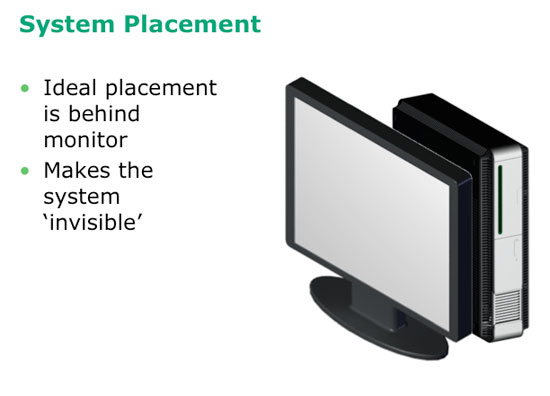
Almost as good as an iMac
With no clear leader in the small form factor standard race, it's anyone's guess where DTX vs. BTX will end up among end users. There's also the question of whether or not there is a huge market for a standardized small PC form factor, will the entire market eventually move to a combination of a tower PC, a notebook and small, proprietary CE devices to get content throughout the home? Looking at the success of Apple's iMac and major OEM desire to compete in the all-in-one space, the debate over small form factor standards may be a little too late.







